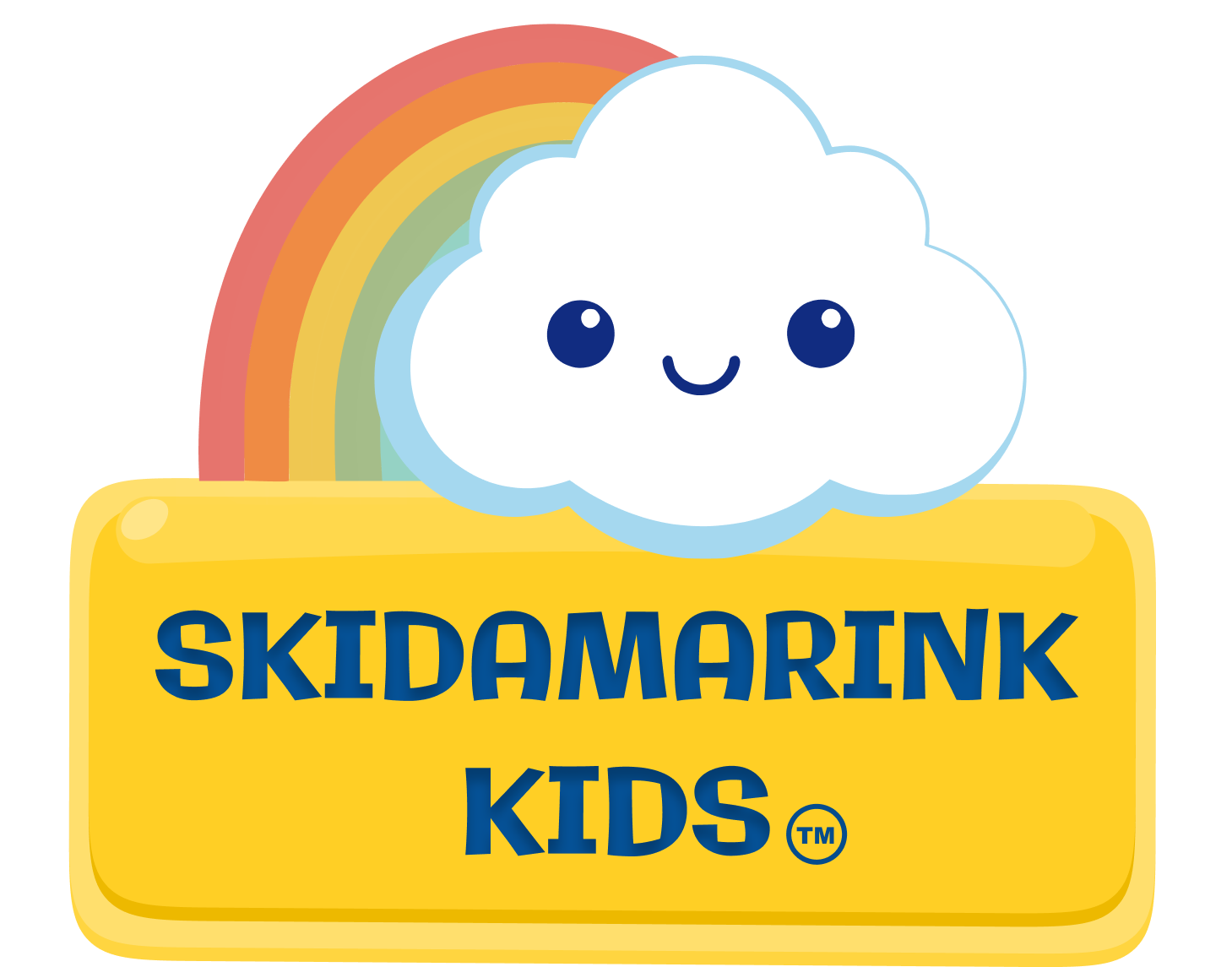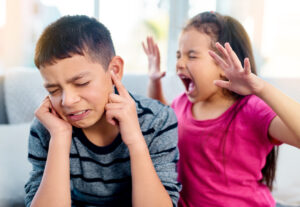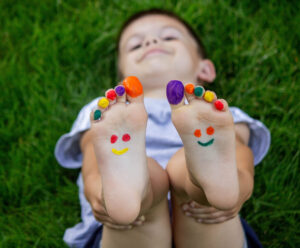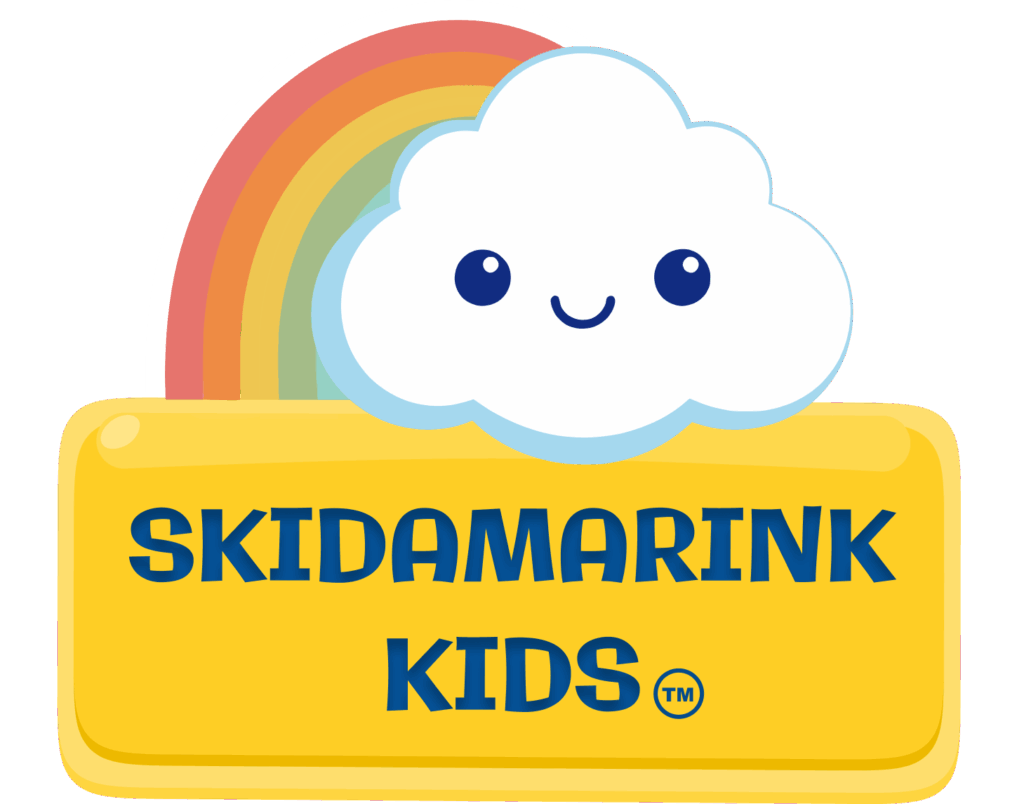You’re in the checkout line when your three-year-old spots candy. You say no. Within seconds, your sweet child transforms into a screaming mess on the floor. Other shoppers stare. You feel your face flush. You ask yourself: “Why do toddlers have tantrums? What’s wrong with my child? Why can’t they just behave?”
Why Do Toddlers Have Tantrums? The Developmental Reality
Tantrums Are A Natural Part of Development
Tantrums are a normal part of childhood. As a mom, I’ve been there. My oldest started having extreme meltdowns at 18 months. The intensity made every day activities a challenge at times. I questioned everything I was doing as a parent.
But as an occupational therapist, I’ve also seen the other extreme. I worked with an eight-year-old who had never had a meltdown. Sounds like a dream, right? It wasn’t, this child’s level of function was significantly delayed. He was non-verbal and couldn’t interact with others.
So while tantrums feel overwhelming in the moment, they are signs development is happening. Understanding this changes everything. When we see meltdowns as communication rather than defiance, we can respond with patience instead of frustration. When we recognize toddler tantrums as normal learning opportunities, we become better equipped to guide our children toward self regulation. This understanding transforms how we parent through the challenging early years.
“We often label tantrums as bad behavior. But when children start having meltdowns, it’s actually a sign their brains are developing.”
All Behavior Is Communication
Tantrums and meltdowns are your child’s way of expressing feelings they can’t yet verbalize. Whether it’s disappointment, frustration, anger, or fear, these behaviors signal that your child is trying to communicate something important. They lack the vocabulary. But the message is clear: something feels overwhelming right now.
When we ask “why do toddlers have tantrums?” the answer starts here. Their emotional experience is real and intense. But their ability to express it with words hasn’t caught up yet. The tantrum is the communication method available to them at this stage of development.
Understanding Your Toddler's Developing Brain
To truly understand why toddlers have tantrums, we need to look at what’s happening inside your child’s developing brain. The emotional brain (the amygdala) is fully developed at birth. This part handles automatic functions like breathing. It also manages emotions like fear, anxiety, and anger. It’s responsible for all those big feelings your toddler experiences.
The thinking brain (the prefrontal cortex) develops much more slowly. This is the part that handles reasoning, planning, impulse control, and emotional regulation. It won’t be fully developed until your child reaches their mid-twenties. During the toddler years, this part of the brain is still under heavy construction.
This developmental gap explains so much. Your toddler feels everything intensely through their fully-formed emotional brain. But they don’t yet have the thinking brain capacity to manage those feelings. The result? Tantrums.
Tantrums don’t start out as defiance. They’re a natural developmental response. However, without learning critical self regulation skills, these patterns can become reinforced over time, leading to challenging behaviors. It’s developmental, yet can turn into a learned response.
“Your toddler feels everything intensely but doesn’t yet have the brain capacity to manage their “Big feelings”. That’s why tantrums happen.”
The Toddler Years: When Independence Meets Limited Skills
These stages are famous for a reason. During ages two and three, children start developing their own ideas and opinions. People often refer to these as the “terrible twos and trying threes”. They begin to understand they’re separate people with their own desires and preferences. This emerging sense of self is a critical developmental milestone.
However, they lack the emotional maturity, impulse control, and language skills needed to express themselves effectively. They want independence but don’t have the skills they need. Strong opinions exist, yet they have not developed strong communication and emotional regulation skills. This frustrating gap between desire and ability answers the question “why do toddlers have tantrums?” during these years.
Meltdowns can be a normal part of healthy child development. They present opportunities for teaching and growth when we respond with patience and understanding.
Common Reasons Why Toddlers Have Tantrums
Understanding specific triggers helps you be proactive to reduce meltdowns. See our companion guide Tantrum Triggers: What Sets Off Your Child’s Meltdowns for common reasons for these.
Do You Want to Transform Tantrums Into Calm?
You now understand that toddler tantrums are normal signs of development. Actually navigating them in real life? That’s where most parents need support.
The Tantrum Tamer App gives you quick-tip guides for common triggers and in-the-moment handling, a daily schedule builder with customizable character voice prompts, an interactive reward system, and curated resources for sensory and emotional regulation.
What parents are saying: “Tantrum Tamer has been a game changer for me and my 2 littles. This app has been an all around resource to give me the knowledge and foundation on milestones, normal behaviors, and self regulation methods all while giving me the ability to give my children a space to learn their big feelings. It is customizable, user-friendly, and most importantly fun and educational!”
Ready to transform tantrum time into teaching time? Download the Tantrum Tamer and bring expert support into your everyday parenting.
Learning Through Tantrums: What Your Child Needs
From Crying to Communicating
Babies cry to get their needs met. It’s an effective strategy that works well in early infancy. As they grow, however, they need to learn new ways to communicate. This transition takes time. It requires patient guidance from caregivers.
Your toddler isn’t purposely being manipulative. They’re learning. Understanding why do toddlers have tantrums helps us see these are their current communication tool. With your help, the goal is that they’ll develop better ones.
Building Self-Regulation Skills
It is not uncommon for someone to say to a 3 year old, “you should know better” when it comes to behaviors. Toddlers may understand that behaviors can have consequences. However, being able to regulate themselves and make better choices requires higher level brain function.
Self-regulation skills like planning, organizing, focusing, and managing emotions develop over time through experience, modeling, and practice. Children need our help to learn how to calm themselves and process their feelings. This guidance is essential for their growth in emotional and behavioral regulation.
Think of it this way: you wouldn’t expect a toddler to tie their shoes or a teenager to drive without teaching them how. Similarly, you can’t expect toddlers to manage big emotions without teaching those skills. Understanding tantrum behavior as a learning process helps us respond more effectively.

The Need for Control and Autonomy
Children have a basic need for control, love, and recognition. When these needs aren’t met, they may express their desire for autonomy through tantrums. This isn’t bad behavior. It’s a developmental drive toward independence.
Understanding this need helps us find ways to give children a sense of control in healthy ways. Offering choices works and involving them in decisions helps. Respecting their growing independence reduces tantrum frequency while supporting healthy development. For proactive strategies that prevent many tantrums before they start, see our guide Preventing Child Tantrums: Proactive Strategies That Work. (Coming Soon)
Why Do Toddlers Have Tantrums? Your Response Matters
How we respond to meltdowns matters tremendously. When we see tantrums as developmental communication rather than defiance, we respond differently.
So why do toddlers have tantrums? They’re learning, communicating, and developing. Our response teaches them how to handle emotions for life. This means staying calm and helping them co-regulate. It also means maintaining consistent boundaries that teach boundaries, impulse control and cooperation.
The Problem with Punishment
Traditional discipline approaches that rely on punishment can trigger a fear response (fight, flight, or freeze). They’re often ineffective long term. Punishment doesn’t address the root cause. Often challenging behaviors become learned responses. Instead of focusing on punishment, shifting to teaching impulse control and setting consistent boundaries can help break these habits. It is also important to understand underlying reasons why some children struggle more with self regulation and lack impulse control.
Understanding "No" and Clear Communication
Young children under the age of five don’t understand “no” or “don’t” like we think they do. These words can be confusing and can cause delays in processing. They may unintentionally reinforce negative behaviors and power struggles.
For a toddler you may say “don’t touch the lamp, yet their brains process “touch the lamp”, then they realize they get attention for touching the lamp. Even adults struggle with this concept. I know if I tell myself. “I will not eat sweets today”, then all I think about all days is sugar!
Instead, offer clear instructions or choices. Tell your child what to do rather than what not to do. Save strong words like “NO” or “Stop” for emergencies.
Quick Reference: Normal Tantrums vs. When to Be Concerned
✅ Normal Developmental Tantrums:
- Happens across various situations (not just when child wants something)
- Decrease in frequency as child develops language and regulation skills
- During tantrum, child can eventually be calmed with consistent support
- Last less than 5-15 minutes on average
- Happens in response to clear triggers (tired, hungry, overwhelmed, transitions)
- Child shows remorse or seeks comfort after calming
⚠️ Signs That May Need Extra Support:
- Tantrums last 30+ minutes regularly
- Can happen multiple times daily without clear triggers
- Involve self-harm (head banging, biting self) or harming others
- Child doesn’t easily calm down even with patient support
- Significantly more frequent or intense than same-age peers
- Interfere with daily activities where child has learned they get results
- Child shows no remorse and immediately repeats behavior
Remember: When in doubt, trust your instincts and consult your pediatrician. You know your child best.
Frequently Asked Questions About Why Toddlers Have Tantrums
How do I know the difference between normal tantrums and learned behavior patterns?
When parents ask “why do toddlers have tantrums,” they’re often wondering if behavior is normal or learned. Normal developmental tantrums happen when your child feels overwhelmed and lacks skills to handle it differently. These tend to decrease as communication and self-regulation develop.
Learned patterns develop when tantrums consistently get results. If your child throws a fit and you give in, you’ve taught them tantrums work.
The key difference: Normal tantrums happen across various situations (ex: home and daycare or school) when genuinely overwhelmed and decrease with age. Learned patterns occur mainly where they get results and may increase.
Respond with calm co-regulation plus firm, consistent boundaries to teach self-control. With consistency, learned patterns can change.
What should I do if my child has more frequent meltdowns than other kids their age?
Every child develops at their own pace. If your child’s tantrums seem significantly more intense or frequent, check the Quick Reference section above for specific warning signs.
Some children struggle with self-regulation due to sensory processing differences, retained primitive reflexes, or other factors. Their nervous system genuinely has a harder time.
If your child shows several of the above signs, see my blog, Why My Child Can’t Self-Regulate for root causes and support strategies including when to seek professional help.
When should I reach out for professional help regarding my child's behavior?
Trust your parental instincts. If something feels off or you’re consistently overwhelmed, seek professional guidance.
The Quick Reference box above lists specific warning signs. If your child shows multiple concern signs, especially self-harm, inability to calm down, or interference with daily life, consult your pediatrician or child development specialist.
Seeking professional support isn’t a sign of failure. It’s having wisdom and wanting what’s best for your child. Early intervention gives you answers and strategies to better support your child.
Remember: Meltdowns Are a Natural Part of Childhood
If your child is having meltdowns, this is a typical stage of development. This is why understanding why do toddlers have tantrums can be reassuring. They’re learning about emotions, testing boundaries, and discovering how to navigate a complex world.
Toddlers are going to have meltdowns. Your job is to guide your child through them with patience while maintaining consistent boundaries. When you respond to meltdowns with calmness and understanding while holding firm limits, you create teaching moments. Boundaries held with empathy become lessons in self-control. The “big feelings” you help them name become steps toward emotional intelligence.
The challenging toddler years won’t last forever. But the skills your child learns during this time will. By understanding why do toddlers have tantrums and responding with both compassion and consistency, you’re laying the foundation for their emotional wellbeing far into the future.
Want Ways to Reduce Your Child's Tantrums?
Understanding why do toddlers have tantrums is the first step. The next step is learning how to respond effectively. Your child needs both your calm presence and clear limits to develop self-regulation. Before children can self-regulate, they need adults to co-regulate with them. This means staying calm when they’re not while holding firm, consistent boundaries with support.
For practical strategies that work in the moment and long-term approaches that prevent tantrums before they start, check out these guides:
Our companion blogs offer more effective response strategies:
- How to Handle Tantrums in Children: Calm Responses That Work
- Preventing Child Tantrums: Proactive Strategies That Work (coming soon)
- How to Get Kids to Cooperate: Building Positive Behavior (coming soon)
– Kendra
A Parent-to-Parent Note
This information is for educational purposes only and isn’t medical or professional advice. Every child develops uniquely. While understanding why toddlers have tantrums helps most families, persistent or severe behavioral challenges may require professional evaluation. If your child’s tantrums are frequent, intense, involve harm, or significantly interfere with daily life, consult your pediatrician or child psychologist. These are general recommendations, not personalized guidance. Trust your instincts. You know your child best.








